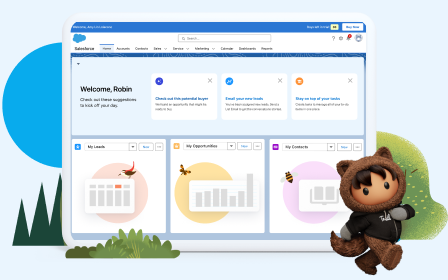SWOT (not to be confused with SWAT) can be a game changer for any team, business, or organisation that wants to be successful. Oh, you say you want that too? Well then, you just may need a SWOT analysis.
A SWOT analysis for a small or medium-sized business (SMB) is a powerful but simple process. It gives businesses a clear view of their current position and helps them understand how to be more successful. We’ll cover what it is, the benefits, and how you can get started with your small business, today.
Here’s your guide to SWOT:
- What is a SWOT analysis?
- Why is a SWOT analysis important?
- Four key elements of SWOT analysis for small business
- How to conduct a SWOT analysis for small business
- SWOT analysis example: a small business case study
- What’s next for small businesses?
What is a SWOT analysis?
The term ‘SWOT’ stands for Strengths, Weaknesses, Opportunities, and Threats. By identifying how they stack up within these four categories, businesses can discover their strengths and potential weaknesses, and identify their long-term competitive differentiation and potential threads. SWOT analysis is a strategic planning and management technique that’s sometimes called situational assessment or situational analysis.
Why is a SWOT analysis important?
A SWOT analysis includes both internal and external factors. Internal factors (strengths and weaknesses) are those that businesses can control or change. External factors (opportunities and threats in the wider economy) are those that lie outside of a business’s control.
These four key factors provide the foundations that businesses can use to plan for the future. They can do this by using their internal strengths to counter external threats. (Back to top.)
Keep Learning About AI for SMB
Four key elements of SWOT for small business
A small business will look at the following four categories when conducting a SWOT analysis:
1. Strengths (internal)
A business’s strengths are a sign of its main advantages in the marketplace. Strengths can include a one-of-a-kind product, or excellent service and aftercare. Ideally, strengths are unique, are not easily replicated by the competition, and help maintain customer loyalty.
For example, your company may have a unique, patented product, or a highly loyal customer base. These things would be difficult for your competition to replicate.
2. Weaknesses (internal)
These are the elements of a business that aren’t operating as efficiently as they could and might hold you back from competing effectively. Your business might lack experience in design, or you might be using outdated systems that don’t talk to each other. A business’s weaknesses are a sign of what it needs to do better to operate at peak efficiency.
For example, a company might be failing to generate repeat purchases due to poor after-sales communication and a sub-optimal customer journey. You could improve this by increasing staff training, or by automating certain processes.
3. Opportunities (external)
Opportunities are areas where your business may gain a competitive advantage. They can present themselves at any time, and even sometimes out of the blue. Small businesses can ensure they are ready to take advantage of them whenever they arise. Having identified your strengths and weaknesses through SWOT analysis, you can understand how you are positioned to capitalise on potential opportunities – and where you might need to improve in order to take advantage of them.
An opportunity can be anything from a competitor’s misstep to changed legislation, to weather that impacts your competition’s supply change.
4. Threats (external)
We live in an unpredictable world, and threats can come at any time. From changing regulations, rising materials costs, and shifts in customer priorities. Threats are external factors, as they are things that businesses can’t influence. But you can try to future-proof yourself in key areas and mitigate your weaknesses.
Automating processes can make you more efficient, so you can focus more on keeping customers happy. And, making contingency plans using digital solutions can help operations to run smoothly in times of crisis. (Back to top.)
How to conduct a SWOT analysis for small business
A SWOT analysis is a highly flexible tool that can be tailored to fit the needs of any business that’s using it. Here are some key points to consider when conducting a SWOT analysis.
Put together a broad team
For a SWOT analysis to be effective, it needs to gather a range of viewpoints from around the business. Talking only to customer services or business analytics teams will give a skewed perspective. Ensure that each major department is represented, from those handling day-to-day operations on the ground to those planning for the future.
Listen to ideas
The team you assemble will be unique, with a particular mix of perspectives and skills. A good first step is to encourage everyone to share their initial thoughts, perspectives, and ideas. Do this either in person, as a group, or virtual, the most important thing is to allow people to share their views in an open and non-judgmental setting.
Create your timeline
When everyone has shared their ideas, it’s time to make some decisions. Those leading the SWOT analysis will want to identify key focus areas, choose a methodology, and decide on a timeline.
Present the findings: A simple grid, with one quadrant for Strengths, Weaknesses, Opportunities, and Threats, is a great way to represent the findings of a SWOT analysis visually. In this form, the insights can be easily shared across the business. (Back to top.)
SWOT analysis example: SMB case study
Here’s a SWOT analysis example that small businesses can use to identify their strengths, weaknesses, opportunities, and threats. We will use Clara’s Cake Kitchen, a fictitious bakery.
Strengths
- Location: Suburban location near a train station that draws in foot traffic during rush hour.
- Product: The owner produces high-quality artisanal cakes that customers come back for, again and again.
- Marketing: The owner successfully uses social media channels to generate buzz about the business and has a large following.
Weaknesses
- Unpredictable ROI: Although the bakery is very busy at several points during the day, and on weekends, there are lots of quiet times during the day, and during the summer.
- Online reach: The owner has not invested in click-and-collect or online services, as she doesn’t know if it will be worth it in the long run.
- Equipment: Some of the kitchen equipment is second-hand, and is prone to break, requiring expensive repairs and causing order delays.
Opportunities
- Loans and funding: Organisations like the Small Business Administration (SBA) offer loans and funding programs that could help Clara’s Cake Kitchen expand, upgrade equipment, and capitalise on new opportunities — potentially creating jobs in the process.
- External events: There are some new food festivals and markets starting up in the nearby city. Having a presence at these events could help to expand the brand’s reach.
Threats
- Cost of materials: The cost of raw materials that the owner uses to bake the cakes may likely increase. It’s becoming harder to find key ingredients without a long lead time.
- Competition: More local bakeries are offering custom cakes from home kitchens, with lower overhead costs and fewer equipment issues.
Summary
Clara’s Cake Kitchen will need to use its strengths to counter its weaknesses while taking advantage of opportunities and preparing to tackle the threats. Adding online ordering and easy pickup for commuters might be an avenue for the bakery to guard against new competitors and higher costs. Her team could host an event for their customers, offering discounts or freebies. And, together, they can build and grow with a low-cost collaboration tool, like Starter Suite. (Back to top.)
What’s next for small businesses?
We’re in a challenging moment where competition is fierce, the landscape is in flux, and seizing new opportunities is crucial. Conducting a SWOT analysis, and enlisting the right tools for the job, can help today’s small businesses address weaknesses, double down on what they do well, and position themselves to succeed in any economy.
Try Starter Suite today
Get started with CRM and see results from day one with Starter Suite — the all-in-one suite of the email outreach, sales, service, and commerce tools you need to succeed. Get the power of the world’s #1 CRM in a simplified, easy-to-use suite built for growing businesses.






























